There is a perennial question that arises for educators and parents alike. Most everyone would agree that a gifted individual is quite capable of developing into a talmid chacham (accomplished Torah scholar) and should thus be encouraged to develop and realize this potential. The thornier issue involves the child who does not display such a level of aptitude: what should be the best course of action in relation to his development? Should he also be prodded and encouraged in the direction of Torah greatness, or should such a dream be abandoned as unrealistic?
Now, there are of course individual circumstances that vary from person to person, and there is no way that clear direction could be offered here to cover all situations. Obviously, these should be handled on a case-by-case basis, with the caring guidance of a qualified Torah authority. There are certain general principles, however, that should be noted and that – as we shall see – can even be derived from this week’s parshah.
Selecting Crowns
The truth is that this question has already been addressed by none other than R’ Aharon Kotler, the venerated Torah sage who founded the Lakewood Yeshivah and is largely credited with successfully transplanting the lost Torah world of Europe to America. His grandson and current head of the yeshivah, R’ Malkiel Kotler, related an incident involving an out-of-town community. This was a far-out locale which, while containing a sizeable Jewish population, was essentially devoid of Torah knowledge and observance. A cadre of idealistic and committed activists was dispatched to found a Torah school there in the hopes of awakening the latent spirit of Yiddishkeit amongst the populace.
Starting for all intents and purposes from scratch, the organizers building up the school wondered from where to begin and what their expectations should be. They assumed that their goals should be modest and realistic, but they consulted with R’ Aharon to solicit some details. Should they merely aim for teaching alef-beis? Should they make a push for Shabbos observance, and at what point? Despite their current distance from Judaism, R’ Aharon asserted that the goals regarding the student body should be sweeping indeed. “You should aim to produce R’ Akiva Eigers,” he instructed, invoking the name of one of the greatest and most erudite Talmudic scholars of the past few centuries.
R’ Aharon’s words seem to be rooted in the following teaching from Chazal. The Mishnah in Avos (4:13) discusses the subject of “crowns”:
שְׁלשָׁה כְתָרִים הֵם, כֶּתֶר תּוֹרָה וְכֶתֶר כְּהֻנָּה וְכֶתֶר מַלְכוּת.
“There are three crowns: the crown of Torah, the crown of the priesthood, and the crown of kingship.”
Chazal in Avos D’R’ Nassan (ch. 41) elaborate on this theme of crowns, delineating the differences between them. Two of these crowns are essentially inaccessible, as they are designated for individuals of a particular lineage. Aharon merited the kesser kehunah, which is reserved for his descendants; the kesser malchus is the domain of the House of David Hamelech. Avos D’R’ Nassan is quite unequivocal regarding the possibility of anyone else meriting these crowns: אֲפִילּוּ נוֹתֵן כָּל כֶּסֶף וְזָהָב שֶׁבָּעוֹלָם אֵין נוֹתְנִין לוֹ – “Even were he to offer all of the silver and gold in the world – they would not give it to him.” But when it comes to Torah, all that is required is a willingness to invest the necessary effort. Then: עַמָלָה שֶׁל תּוֹרָה כָּל הָרוֹצֶה לִטּוֹל יָבוֹא וְיִטֹּל – “(By) toiling in Torah, whoever wants to take this crown may simply come and take it.”
No Calculations
It may seem like an unlikely place, but this idea is reflected in a section toward the end of the parshah, which deals with the intricate laws of designating sacrificial animals. The Torah directs a person to tithe his herd, offering each tenth animal to Hashem. However, he cannot aim to arrange matters such that a particular animal be chosen, whether good or bad; whichever falls out as the tenth when counting them is slated as the offering. As the passuk states: לֹא יְבַקֵּר בֵּין־טוֹב לָרַע וְלֹא יְמִירֶנּוּ – “He shall not discern between good and bad, nor shall he substitute for it” (Vayikra 27:33).
R’ Moshe Feinstein (Darash Moshe) perceives herein a lesson that extends beyond the specific area of ma’aser beheimah (animal tithe), but indeed pertains to each and every one of us. He explains that this in fact is the attitude the Torah intends for us to adopt when it comes to the endeavor of Torah study: לֹא יְבַקֵּר בֵּין־טוֹב לָרַע – “He should not discern between good and bad.” A person should not say of a certain child of his – or even of himself – that he is not “cut-out” for Torah; better that someone imbued with greater abilities be granted the task of applying himself in this area. This, the Torah exhorts us, is a misconception. The Torah is open to everyone, regardless of his capabilities. For some it may come easier, while others may have to toil a bit harder. But at the end of the day, Chazal have assured us that “L’fum tza’ara agra – the reward is commensurate with the effort” (Avos 5:23). They have stated further: אִם יֹאמַר לְךָ אָדָם יָגַעְתִּי וְלֹא מָצָאתִי אַל תַּאֲמֵן, לֹא יָגַעְתִּי וּמָצָאתִי אַל תַּאֲמֵן, יָגַעְתִּי וּמָצָאתִי תַּאֲמֵן – “If a person says to you: ‘I have toiled, but have not found (success in Torah learning)’ – do not believe him; ‘I have not toiled, but have found (success)’ – do not believe him; ‘I have toiled and found (success)’ – believe him” (Megillah 6b). All of this is in keeping with the inviolate truth we have seen above, regarding the kesser Torah: כָּל הָרוֹצֶה לִטּוֹל יָבוֹא וְיִטֹּל . It is there for the taking, for whoever deems to apply himself.







